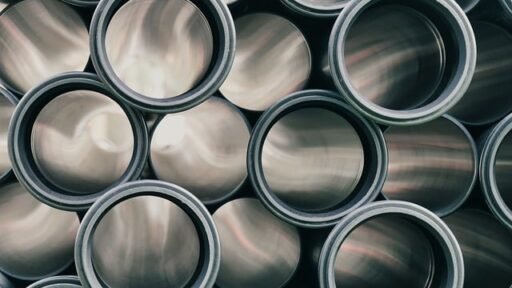-
Table of Contents
The Rise of 3D Printed Homes: A Game-Changer in Construction

In a world where technology continues to reshape every aspect of our lives, the construction industry is no exception. Enter the revolutionary concept of 3D printed homes, a groundbreaking approach that’s set to transform the way we build and think about housing. At the forefront of this innovation is a company that’s not only pushing the boundaries of what’s possible but also eyeing Ohio as the potential site for its new manufacturing plant.
The idea of 3D printing entire houses might sound like something out of a sci-fi novel, but it’s rapidly becoming a reality. This cutting-edge technology offers a myriad of benefits, from increased efficiency and reduced waste to lower costs and greater design flexibility. As millennials and Gen Z face increasingly challenging housing markets, 3D printed homes could provide a much-needed solution to the affordability crisis.
[Image: A 3D printer in action, creating the walls of a house]
The company leading this charge is making waves in the construction industry with its innovative approach to homebuilding. By utilizing large-scale 3D printers and specially formulated concrete mixtures, they’re able to create sturdy, customizable homes in a fraction of the time it takes for traditional construction methods. This process not only speeds up the building timeline but also significantly reduces labor costs and material waste.
As the demand for affordable housing continues to grow, particularly among younger generations, the potential impact of 3D printed homes cannot be overstated. With the ability to construct homes quickly and efficiently, this technology could help address housing shortages in urban areas and provide more accessible options for first-time homebuyers.
The company’s interest in Ohio for its new plant is a testament to the state’s growing reputation as a hub for innovation and manufacturing. Ohio’s strategic location, skilled workforce, and supportive business environment make it an attractive option for companies looking to expand their operations.
The Technology Behind 3D Printed Homes
To truly appreciate the potential of 3D printed homes, it’s essential to understand the technology that makes them possible. The process begins with a computer-aided design (CAD) model of the house, which is then translated into instructions for the 3D printer. These massive printers, often mounted on tracks or gantry systems, extrude layers of specialized concrete to form the walls and structure of the home.
The concrete mixture used in 3D printed homes is carefully formulated to provide the right balance of strength, durability, and workability. It needs to be fluid enough to be extruded through the printer nozzle but also quick-setting enough to maintain its shape as subsequent layers are added. This precision allows for the creation of complex geometries and unique designs that would be difficult or impossible to achieve with traditional construction methods.
One of the most significant advantages of 3D printed homes is the speed at which they can be constructed. While a conventional home might take months to build, a 3D printed house can be completed in a matter of days or weeks. This rapid construction timeline not only reduces labor costs but also minimizes the impact on the surrounding environment and community.
[Image: A completed 3D printed home with modern design features]
The environmental benefits of 3D printed homes are also worth noting. By using only the exact amount of material needed for each project, this technology significantly reduces waste compared to traditional construction methods. Additionally, the ability to use locally sourced materials and incorporate sustainable design features makes 3D printed homes an attractive option for environmentally conscious consumers.
As the technology continues to evolve, we’re likely to see even more innovative applications in the construction industry. From affordable housing solutions to disaster relief shelters, the potential uses for 3D printed structures are vast and varied.
Ohio: A Prime Location for Innovation
The company’s interest in establishing a new plant in Ohio is not surprising given the state’s many advantages. Ohio has long been known for its strong manufacturing heritage, and in recent years, it has been actively working to position itself as a leader in emerging technologies.
Ohio’s central location provides easy access to major markets across the United States, making it an ideal base for a company looking to expand its reach. The state’s robust transportation infrastructure, including highways, railways, and airports, further enhances its appeal as a manufacturing hub.
Moreover, Ohio boasts a skilled workforce with a strong background in manufacturing and engineering. The state’s numerous universities and technical schools produce a steady stream of talented graduates ready to take on the challenges of innovative industries like 3D printed construction.
The state government has also been proactive in creating a business-friendly environment, offering various incentives and support programs for companies looking to establish or expand their operations in Ohio. This commitment to fostering innovation and economic growth makes Ohio an attractive destination for forward-thinking companies in the construction technology sector.
The Impact on Housing Affordability
For millennials and Gen Z, who have faced significant challenges in the housing market, the prospect of 3D printed homes offers a glimmer of hope. The affordability crisis has been a persistent issue, with rising home prices outpacing wage growth in many areas. This has left many young adults struggling to achieve the traditional milestone of homeownership.
3D printed homes have the potential to address this issue by significantly reducing construction costs. The streamlined building process requires fewer workers and less time, which translates to lower labor costs. Additionally, the precise nature of 3D printing minimizes material waste, further reducing expenses.
These cost savings can be passed on to homebuyers, making homeownership more accessible to a broader range of people. For young adults burdened with student loan debt or facing stagnant wages, the prospect of an affordable, high-quality home is particularly appealing.
[Image: A young couple standing in front of their new 3D printed home]
Furthermore, the customization options available with 3D printed homes allow for greater flexibility in design and layout. This means that buyers can potentially get more bang for their buck, with homes tailored to their specific needs and preferences without the premium typically associated with custom builds.
The speed of construction also plays a role in affordability. With 3D printed homes being built in a matter of weeks rather than months, buyers can potentially save on temporary housing costs and move into their new homes more quickly. This efficiency could also help address housing shortages in high-demand areas, potentially easing some of the pressure on the housing market.
Challenges and Considerations
While the potential benefits of 3D printed homes are significant, it’s important to acknowledge that the technology is still in its early stages and faces several challenges. One of the primary hurdles is regulatory approval. Building codes and zoning laws in many areas have not yet caught up with this innovative construction method, which can create obstacles for widespread adoption.
There’s also the question of public perception. While younger generations may be more open to the idea of living in a 3D printed home, there may be skepticism about the durability and longevity of these structures. Education and demonstration projects will be crucial in building trust and acceptance among potential homebuyers.
Another consideration is the initial investment required to set up 3D printing operations. The specialized equipment and materials can be costly, which may limit the number of companies able to enter the market initially. However, as the technology becomes more widespread and economies of scale come into play, these costs are likely to decrease.
The impact on the traditional construction workforce is also a factor to consider. While 3D printing may reduce the need for certain types of labor, it will also create new job opportunities in areas such as 3D modeling, machine operation, and specialized concrete formulation. The industry will need to adapt to these changes, potentially requiring retraining programs for workers.
The Future of Housing and Construction
As we look to the future, it’s clear that 3D printed homes have the potential to revolutionize the construction industry and reshape our approach to housing. The technology offers solutions to many of the challenges facing the housing market, from affordability and sustainability to speed and customization.
For millennials and Gen Z, who have grown up in a world of rapid technological advancement, the idea of 3D printed homes may seem like a natural progression. These generations are often more open to innovative solutions and may be more willing to embrace new forms of housing that align with their values of sustainability and affordability.
The potential establishment of a 3D printed home manufacturing plant in Ohio could mark a significant milestone in the industry’s growth. It would not only bring new jobs and economic opportunities to the state but also position Ohio as a leader in construction technology innovation.
As the technology continues to evolve, we can expect to see even more exciting developments in the field of 3D printed construction. From multi-story buildings to infrastructure projects, the possibilities are vast and varied. The ability to quickly and efficiently create customized structures could have far-reaching implications beyond just residential housing, potentially transforming commercial construction, disaster relief efforts, and even space exploration.
[Image: A futuristic cityscape featuring various 3D printed buildings]
However, it’s important to remember that 3D printed homes are not a panacea for all housing issues. They represent one of many potential solutions to the complex challenges facing the housing market. Factors such as land availability, urban planning, and economic policies will continue to play crucial roles in addressing housing affordability and accessibility.
Embracing Innovation in Housing
For young adults navigating the challenging landscape of homeownership, the emergence of 3D printed homes offers an intriguing alternative to traditional housing options. As this technology becomes more widespread, it has the potential to provide affordable, sustainable, and customizable housing solutions that align with the values and needs of younger generations.
The interest in establishing a new plant in Ohio highlights the growing recognition of the potential of 3D printed homes. It also underscores the importance of fostering innovation and embracing new technologies in addressing longstanding challenges in the housing market.
As we move forward, it will be crucial for policymakers, industry leaders, and consumers to work together to create an environment that supports the growth and development of 3D printed housing. This may involve updating building codes, investing in workforce training, and educating the public about the benefits and capabilities of this technology.
For millennials and Gen Z, staying informed about these developments and being open to new housing solutions will be key. As the early adopters and future leaders, these generations have the power to shape the direction of the housing market and push for innovative solutions that address their unique needs and challenges.
The potential establishment of a 3D printed home manufacturing plant in Ohio is more than just a business decision – it’s a glimpse into the future of housing and construction. As we stand on the brink of this technological revolution, it’s an exciting time to be a homebuyer, a construction professional, or simply an observer of the changing landscape of how we build and live in our homes.
In conclusion, the






